
Considering the houseplant craze that’s continued over the past few years, it’s not hard to think most people now have at least one plant in their home. When it comes to gardeners, and especially gardeners strapped for space, the number of plants is likely much higher.
There is no shortage of houseplant care advice out there. And while we indoor gardeners may follow them diligently, there is one practice many of us forget about – repotting.
As the owner of over 100 indoor plants and counting, I know the struggle of repotting season. Between buying new pots, making your own soil mixes, and messing up your recently cleaned patio, it’s certainly far more onerous than watering or the occasional leaf clean.
But if you plan on keeping your plants in the long term, it is one of the most important tasks you can do.
Repotting time only comes around once every few years, but may come sooner if your plants display signs that they need a bigger home. Follow these tips to know when it’s time to repot, and how to do it without harming your plants.
When Is The Best Time To Repot Houseplants?
There are two kinds of gardeners – those who repot way too soon, and those who almost never repot. Okay, that may be simplifying things too much, but it does describe a split between many of the indoor gardeners I know.
Repotting Too Early
In the first scenario, our indoor gardener searches meticulously for the best houseplant in the nursery. Maybe it’s a collector’s item, or a recent cultivar new to the market. This gardener wants to ensure this plant has the best care possible. With the best of intentions, they take the plant home and immediately repot it, only to find it struggling within a few weeks.
Sound familiar?
If that has been the case for you, you’re guilty of repotting too early. While some plants bought from nurseries may look like they need a new pot, it’s never a good idea to repot right away.
Nurseries keep their houseplants in absolutely perfect conditions that are almost impossible to match indoors. Bringing them home is already a shock to the system.
They will need time to adjust to their new spot, and repotting right out of the gate will only add to the stress the plant is facing.
If it does show any of the repotting signs discussed later, leave the plant to adjust for a bit before tackling the project. They can handle a slightly crowded pot far better than transplant stress.
Repotting Too Late
On the other end of the spectrum, we have a gardener with an indoor plant that they’ve had for years. There are probably a couple sitting in the same spot they were in when they were bought ages ago.
Now, the plant isn’t growing, or may even be dying, after thriving for so long on the same sunlight and watering it’s always had.
When all other potential causes for a dying plant have been ruled out, you’re likely late on a repotting session.
After all, indoor plants weren’t made to grow in pots (or indoors for that matter) and will eventually need more space to grow.
They are also only able to survive in good soil. Once all the nutrients have disappeared and the soil structure has disintegrated, there is nothing left to sustain the roots and keep the plant healthy, no matter how well you care for it.
The lesson learned from these examples is that it’s never good to repot too early or too late. The right time to repot is only when absolutely necessary, indicated by these six signs. If your plant is showing signs of stress, always rule out any other causes before repotting to prevent further stress from transplanting.
6 Signs To Repot
1. The Roots Are Visible
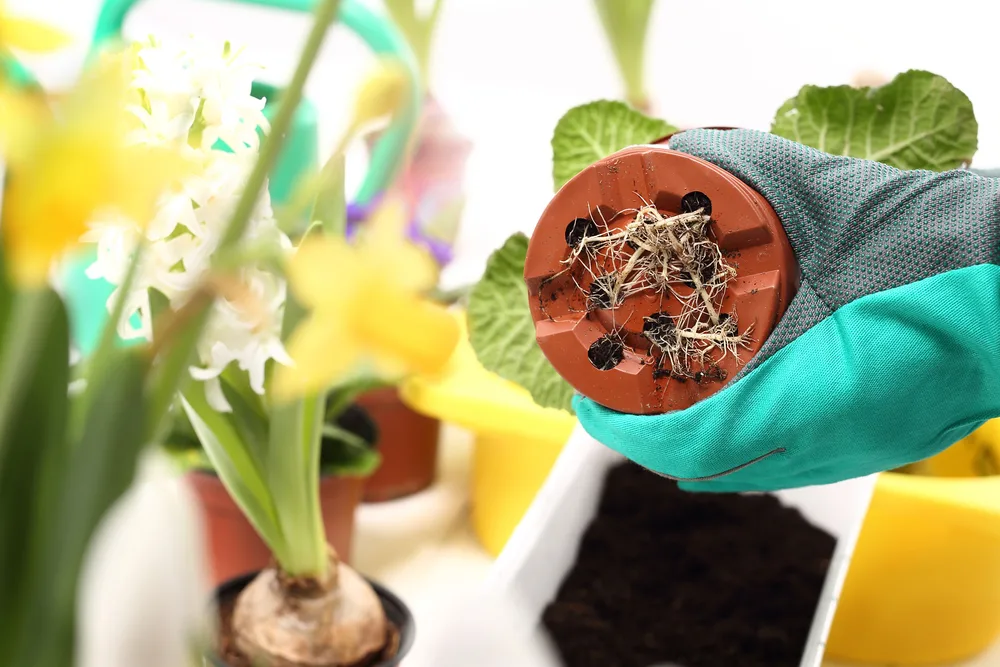
Roots are the only reason your plant stays alive. These essential vessels transport water and nutrients to all the parts of the plant that need it. They also anchor the plant in the soil, allowing it to stand up straight without falling over.
Take care of the roots, and you will likely have a very happy plant.
When the roots get overcrowded, they lose their effectiveness. They cannot take up nutrients and water easily, or may become wrapped around each other, restricting flow. And if the roots aren’t able to do their job of keeping the plant alive, it won’t last much longer.
If you begin to see roots escaping the pot, either through the drainage holes at the bottom or worse, above the soil line, it is time to repot.
Another way to test is to pull the plant out of its pot slightly before watering and check whether the roots are circling the bottom of the pot. If you see more root than soil, repot straight away.
When repotting, you will need to release the bound roots to allow them to extend outwards in the new pot. Depending on the plant, it may also be best to cut off some of the dying roots to make space for more healthy growth.
2. The Plant Is Losing Leaves
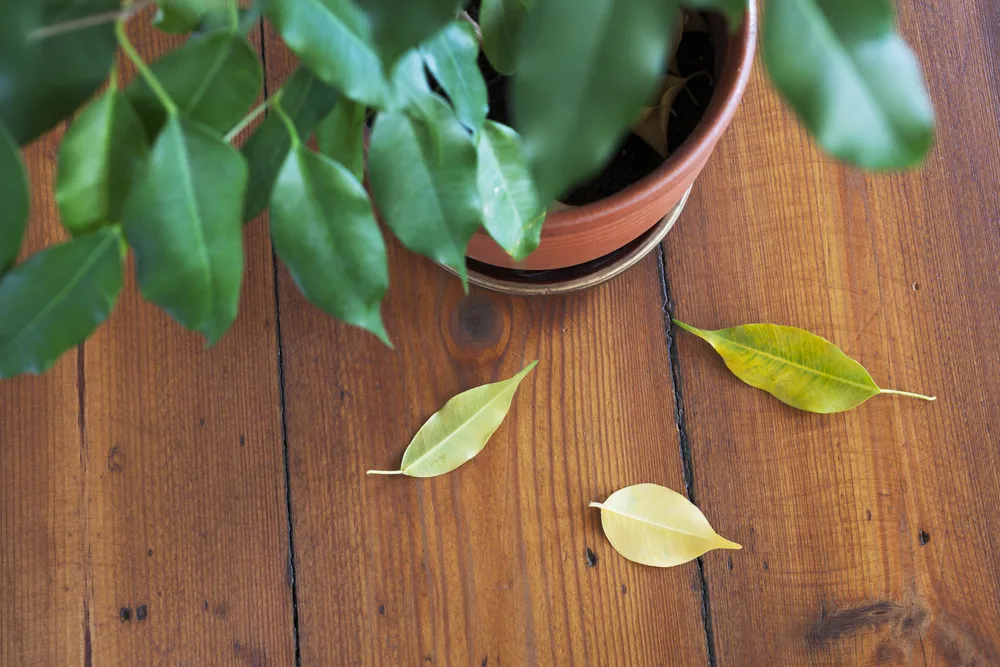
Leaf drop is an understandably concerning problem. Most houseplants are grown for their stunning leaves, so it’s distressing to watch them disappear one by one, potentially leaving you with nothing left.
Leaves are also essential to the functioning of the plant. The chlorophyll in the leaves is what gives the plants energy, so without them, there will likely be no more growth.
If you’ve ruled out factors like over or underwatering or disease, it could be time to consider a repotting.
Plants that have been in the same pot for a long time may be root bound or lack the nutrients in the soil to keep them going. They respond to these stressors by dropping their leaves in an attempt to survive.
One leaf loss may be nothing to worry about, especially if that leaf is old. But if the drop is more than one, and you’ve ruled out other troubling factors, try repotting.
3. It Stops Growing
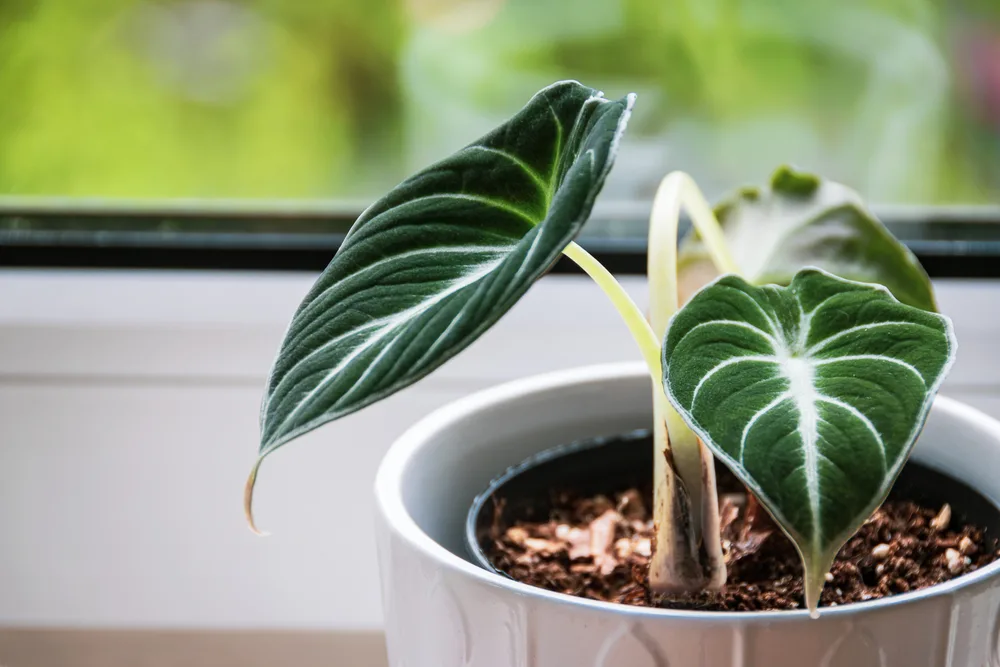
This sign may be hard to distinguish because plants grown indoors normally grow slowly anyway. But, if it’s clear the plant has stopped growing altogether, you may have a problem on your hands.
Most houseplants are tropical and used to growing in nutrient-rich jungles with plenty of space to sprawl. Left alone, they will grow to massive heights.
Consider the pothos – this trailing plant has very small leaves when grown indoors and stays that way. However, when planted outdoors, the vines snake up trees several feet tall and the leaves grow two or three feet long.
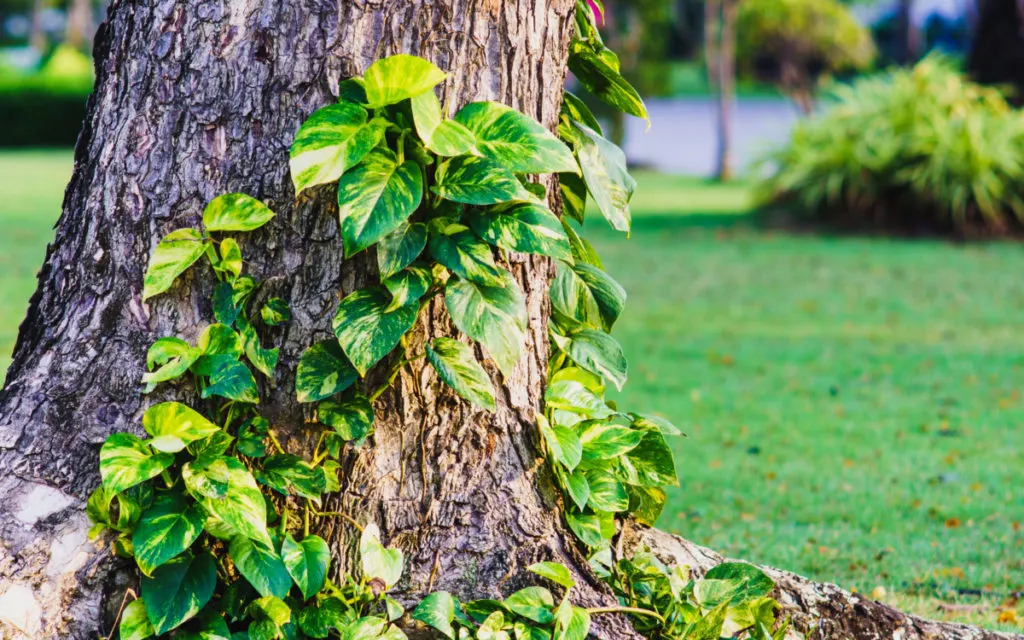
The confines of a pot are not even close to these natural conditions, but the plants still have the desire to grow bigger and stronger. So, while they may grow slowly, they should still always be growing.
If your plant’s growth is stunted, it could lead to a host of other issues, or possibly the death of the plant. If you plan to keep your plant alive and happy, this is the time to repot.
4. The Leaves Are Drooping
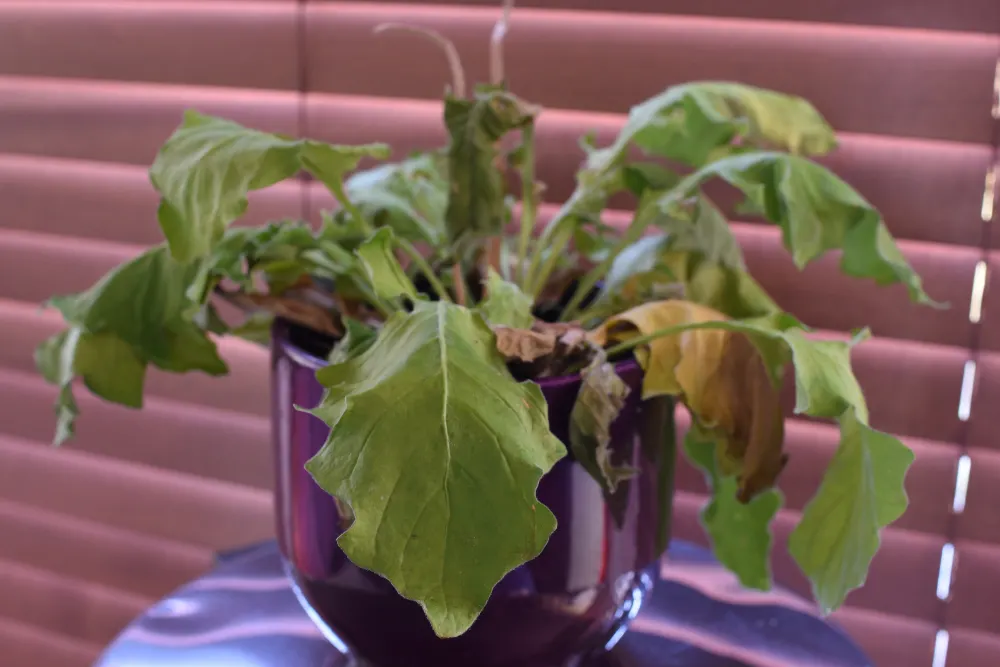
Wilting leaves are easily fixable. Either you’ve watered too little, and the plant is telling you it needs a drink, or you’ve watered too much and you need to let the soil dry out. However, if you’re confident in your watering routine and are sure that isn’t the issue, repotting could be your answer.
Drooping leaves may result from many pot-related issues but are normally caused by a problem with the roots.
When the roots cannot take up water – when they are restricted and the plant is root bound, for example – the stems and leaves of the plant don’t receive water. This water is transported to the plant cells to fill them, which holds the plant up.
So, with the lack of water, the leaves respond by drooping as they don’t have the necessary substance to stay up straight. Repot the plant in clean, healthy soil and it should have the strength to get back to normal.
5. The Leaves Are Yellow

Yellowing leaves are one of the most common houseplant problems. Making matters more confusing, they also have so many causes. Underwatering, overwatering, lack of sunlight, pests or diseases – the list goes on. Another reason for your yellow leaf woes could even be that your plant needs a repotting.
Yellowing leaves in all plants are usually a response to a nutrient problem. When the soil lacks nutrients, the leaves indicate a deficiency through yellowing leaves.
Fertilizing may resolve the problem, but if the soil does not hold onto nutrients (as is the case when the plant has been in the same pot for several years), no amount of additional nutrients will fix the deficiency as the nutrients will leech straight through the pot.
In this case, repotting is most necessary for soil replacement.
If the plant has clearly not outgrown the pot in size, you can even remove the soil, clean the pot, and replant it in the same pot. However, to save yourself another repotting in a few months, it’s always good to go one size up – just in case.
6. The Plant Looks Too Large For The Pot
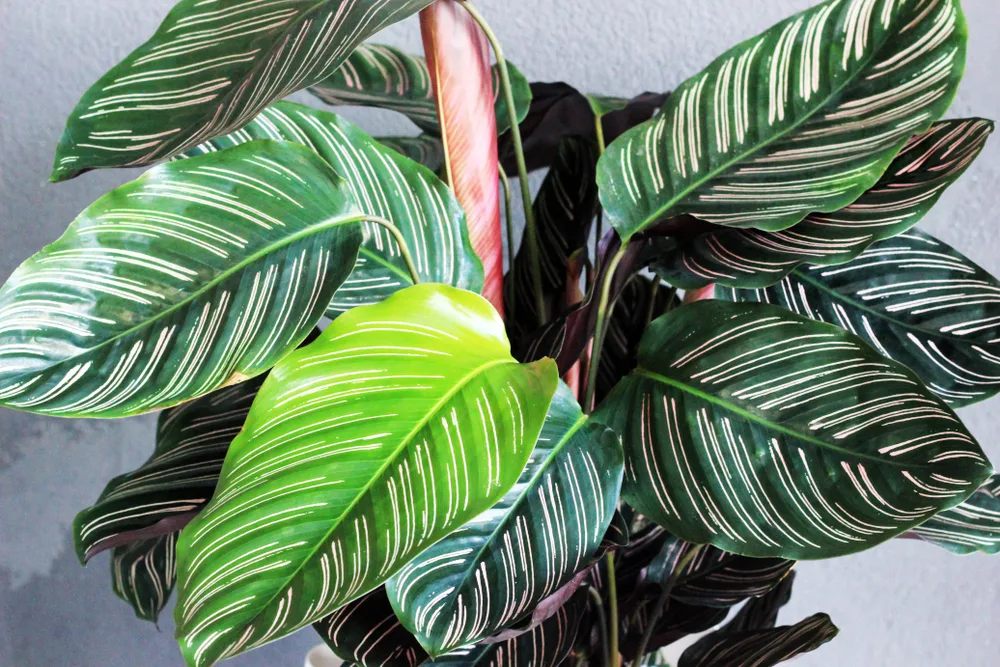
And finally, we have the easiest indicator of them all – the plant simply looks far too big to grow in such a tiny pot. It may not be showing any sign of struggle, and could even be thriving, but a massive plant in a tiny pot is bound to have problems later on, particularly in trying to stay up straight.
As a general rule, your plant should never be more than 2-3 times the size of the pot it’s growing in. If it is well past 3 times, it’s time to repot.
How To Repot
That covers the question of when. Now, let’s discuss how.
The first step in repotting is finding a new pot.
Unfortunately, this is also the step that trips up many gardeners. Getting a pot far larger than the one you already have will not result in greater growth, as some assume. It is more likely to retain more water than the plant needs, causing in root rot.
Learn how to spot and treat root rot by clicking here.
Always choose a pot one or two sizes up at most.
Slow-growing indoor plants won’t need much more space than that for a few years.
Secondly, you need to create a soil mix. Houseplants are grown in a special mix of materials designed to hold water but drain well enough to prevent root rot.
Regular potting soil (or worse, garden soil) won’t cut it. Instead, take a look at what the plant is currently growing in and try to replicate that as much as you can to prevent transplant shock. Houseplant soil is usually a combination of potting mix, bark, perlite, and a water-retaining material like coconut coir.
Meredith walks you through creating the perfect potting soil in this article.
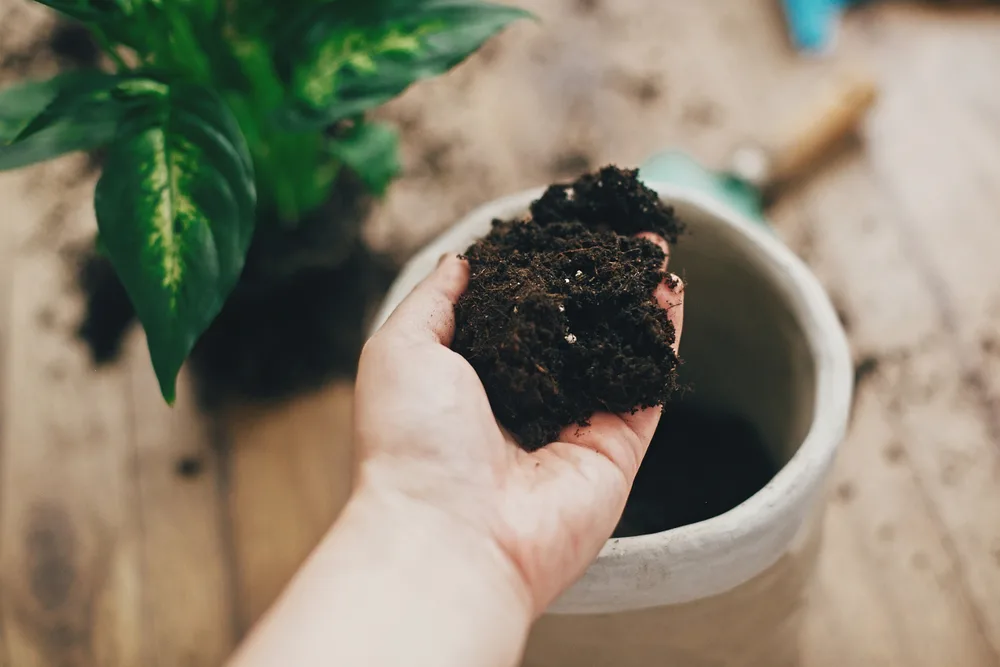
Now comes the fun part – getting your hands dirty. Gently squeeze the sides of the pot to loosen the plant, turn it on its side, and gently pull. This is easiest just before watering, to ensure the soil is not wet.
Tease the roots and shake off any loose, poor-quality soil. This is the ideal time to check for signs of root rot or diseases, as all the soil will need to be replaced if that is the case.
Fill the bottom third of your new pot with the potting mix and place the plant inside, filling in the gaps and compacting as you go. Once filled almost to the top – leaving some space above the soil line to prevent soil overflow when watering – gently compact the soil around the stem to anchor the plant in place. Water thoroughly and place your plant back where it was, happy in its new home.
Repotting houseplants is not everyone’s favorite task, but it is an incredibly important one. Keep an eye out for these signs and repot when your plants indicate they need it, ensuring you do your best to minimize stress and keep the plants healthy in the long term.
If you’re concerned you may be making other common houseplant gardening mistakes, you’ll want to read up by clicking here.

Get the famous Rural Sprout newsletter delivered to your inbox.
Including Sunday musings from our editor, Tracey, as well as “What’s Up Wednesday” our roundup of what’s in season and new article updates and alerts.

